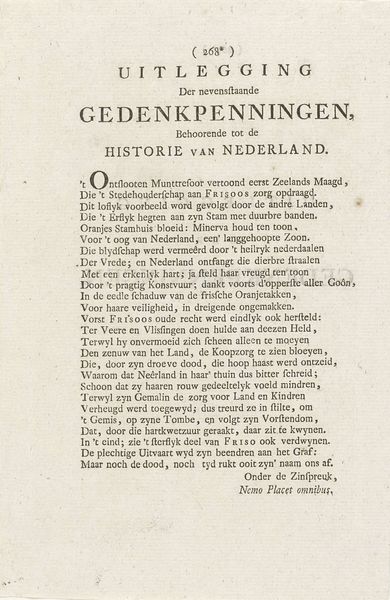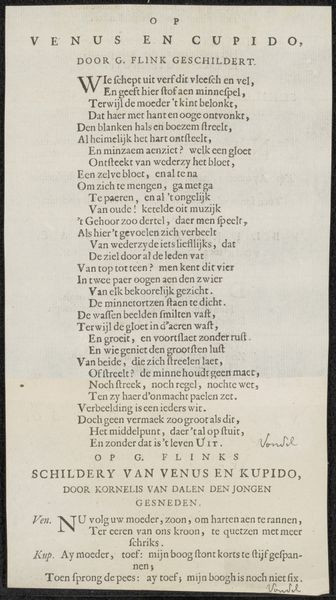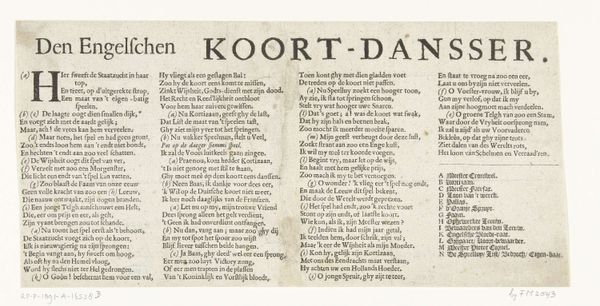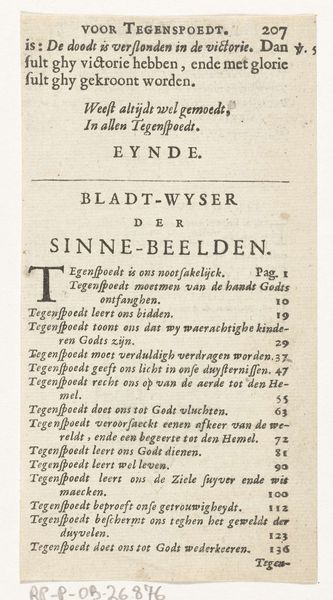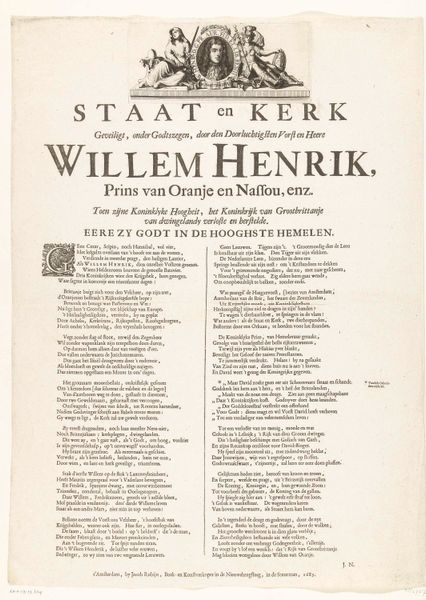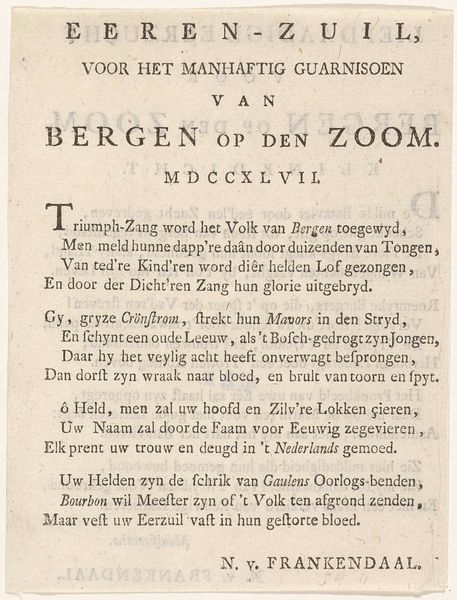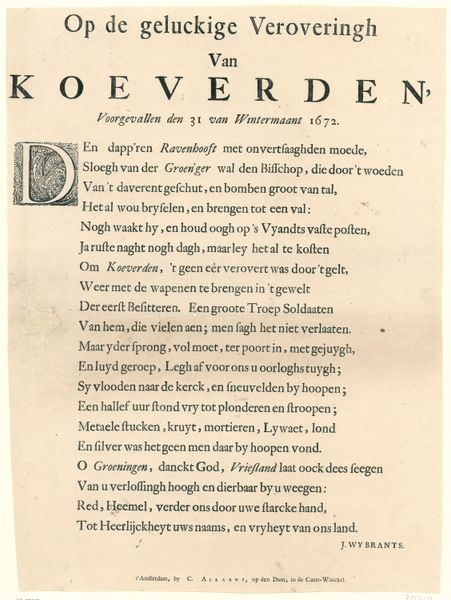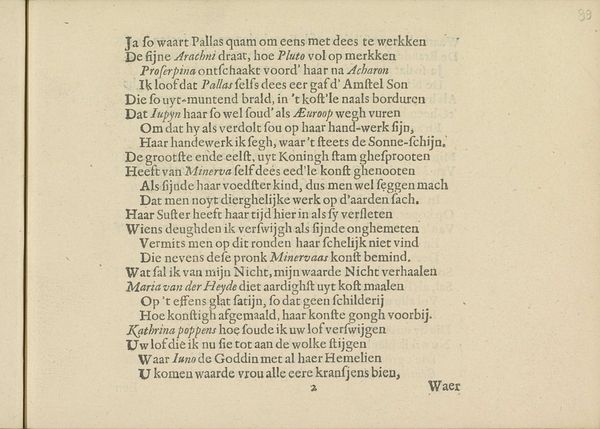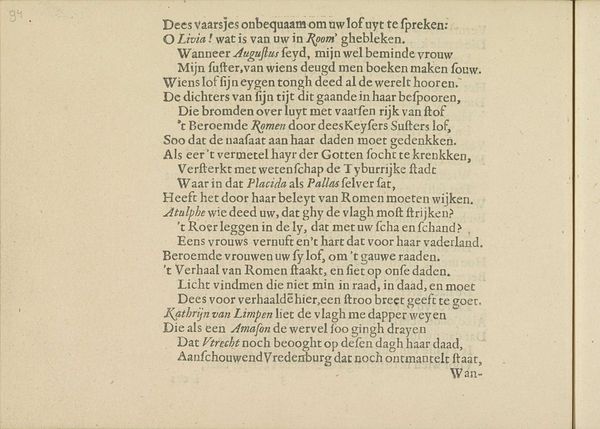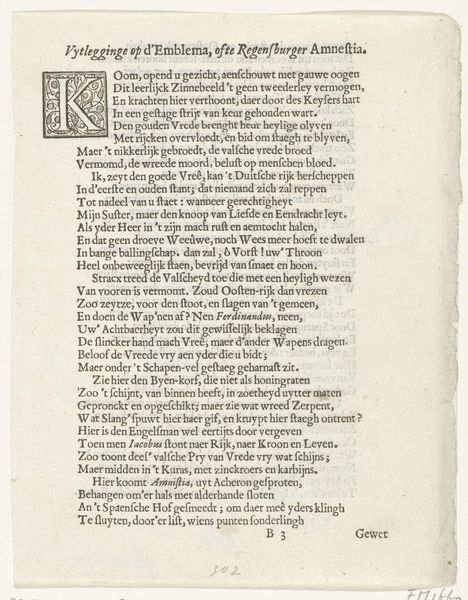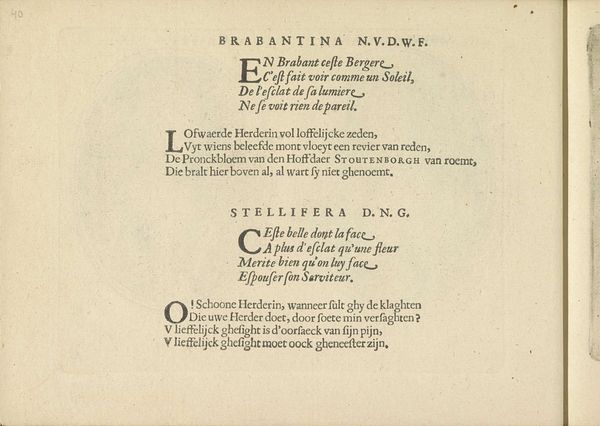
Vers bij de spotprent met Theodorus Dominicus die op een kruiwagen de kerk in wordt gereden, 1683-1684 1683 - 1684
0:00
0:00
anonymous
Rijksmuseum
graphic-art, print, typography, engraving
#
script typeface
#
graphic-art
#
hand-lettering
#
dutch-golden-age
# print
#
hand drawn type
#
hand lettering
#
typography
#
hand-drawn typeface
#
stylized text
#
thick font
#
history-painting
#
handwritten font
#
engraving
#
historical font
#
small lettering
Dimensions: height 224 mm, width 227 mm
Copyright: Rijks Museum: Open Domain
Editor: Here we have "Vers bij de spotprent met Theodorus Dominicus die op een kruiwagen de kerk in wordt gereden," from 1683-1684, an engraving currently held at the Rijksmuseum. What strikes me immediately is the overwhelming amount of text. It feels like a broadside, aiming to persuade rather than simply depict. How do you interpret this work, especially considering its historical context? Curator: You've correctly identified the persuasive nature of this piece. During the Dutch Golden Age, prints like these functioned as potent tools of public discourse. It's important to analyze this not just as art, but as a form of political commentary, wouldn't you agree? It's clearly a statement on religious tensions. Editor: Absolutely. The central image, though obscured by the text, seems to depict someone being wheeled into a church in a wheelbarrow. Is it meant to be satirical, portraying Theodorus Dominicus as somehow unfit or unwilling to enter the church normally? Curator: Precisely. Considering the religious and political climate of the time, it's crucial to ask, what was the controversy surrounding Theodorus Dominicus? And who was the intended audience of this print? Was it designed to reinforce existing biases or incite further opposition? The act of depicting this event in a readily available printed format served to amplify whatever message it carries, regardless of its source or accuracy. Editor: So, it's less about the artistry itself and more about its function as a form of visual and textual propaganda? Curator: Not necessarily less, but different! One medium’s propaganda is another’s form of social activism! Looking closer we can observe the use of language and typeface to gauge its effectiveness, which offers us today insight into their public roles back then and related politics. Editor: I hadn't considered that it’s medium-agnostic. I’m thinking differently now about how art and text create historical understanding! Curator: Exactly. That understanding shapes the ways history remembers them, too.
Comments
No comments
Be the first to comment and join the conversation on the ultimate creative platform.
